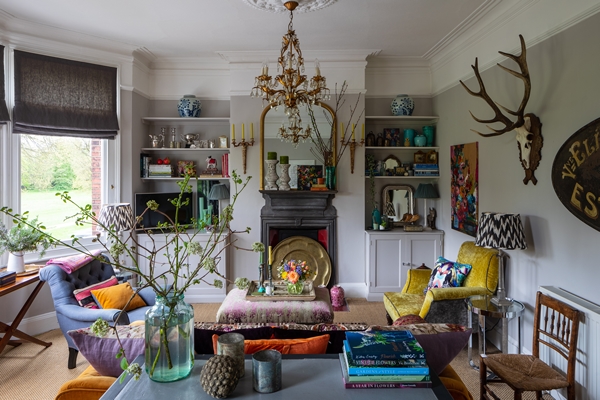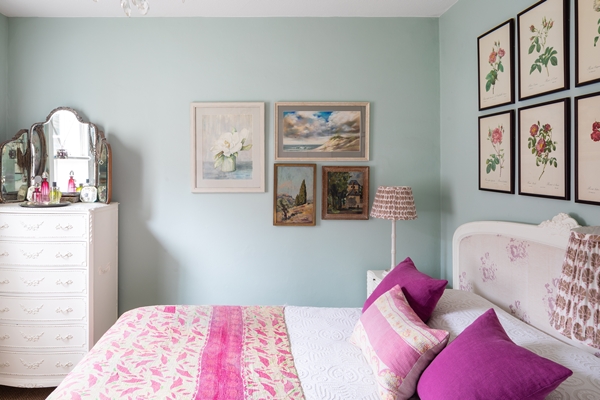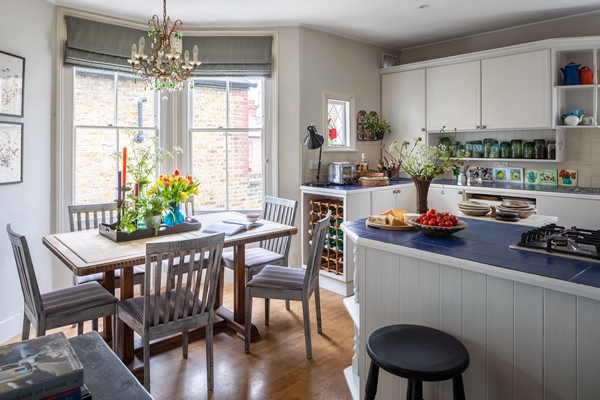What is the colour scheme of the room?
Firstly, you need to consider the atmosphere you'd like to create. Do you want it to be a light, neutral space or a dark, moody and dramatic space? Contrary to popular belief, small spaces don't feel lighter if you paint them in white or a light colour; actually, the opposite is true.
There are other elements you need to consider before creating a colour scheme:
o Style of the room - what period is it and will this influence your choices
o Light – which way the room faces, the quality and intensity; how it moves through the house; the effect it has at different times of the day.
o Furniture, flooring, accessories, artwork - Are you are keeping any existing pieces that may dictate the colour scheme - a rug, piece of art, sofa, chair(s) etc.
Which way does your room face?
Remember to check which way the room faces. The following advice is for rooms in the northern hemisphere; you need to reverse these if you live in the southern hemisphere e.g. a north-facing room in the southern hemisphere is the same as a south-facing room in the northern hemisphere.
Paint colours for a north-facing room
North-facing rooms are usually gloomy and cold so are the most difficult to decorate – especially if you are trying to create light and space.
I would recommend working with the nature of the room instead of fighting it by using a strong dark colour — purples, browns etc., which will create both intimacy and drama. However, if you prefer neutral tones, choose a white with a creamy or yellow base to bounce light. Steer clear of any grey undertones in the colour as these will make the room feel cold. If you use a dark colour, it's always best to paint the skirting boards in the same colour especially if the ceilings aren't high.
Paint colours for a south-facing room
South-facing rooms are sunny and light and therefore are the easiest to decorate because you can use both warm and cool colours. In fact, I would go so far as to say that any colour will look good in a south facing room.
Pale colours with give the room a feeling of light and space. You could use pale cool blues if you want to create a seaside feel. For a warm and sophisticated feel, use a red based neutral colour. The image is my own sitting room which I've painted in Farrow and Ball 'Cornforth White' which is one of their easy greys, neither too warm nor too cold.
Paint colours for east- and west-facing rooms
East-facing rooms: the morning light is warm where the sun rises and changes to cold light during the day.
West-facing rooms: cold light in the morning and warm light in the evening.
When you use the room should determine how you decorate it:
Morning/day time
East-facing: decorate it as you would for a south-facing room.
West-facing: decorate it as you would for a north-facing room.
Evening
East-facing: decorate as you would for a north-facing room
West-facing: decorate as you would for a south-facing room.
If the room is used day and night, try to mix both warm and cold colours in the room which will complement the changing light.
The light in east-facing rooms can seem a little blue, so I recommend you don't fight this and work with it by choosing cool neutral colours, blues and greens.
West-facing rooms work with whites and even a neutral colour with grey undertones. Late afternoon sun works very well with red or pink colours which will create a lovely warm glow in the room.
Testing your colour choices
Before you choose the paint colour, I recommend you buy several sample pots of paint colours that you think might work. If you are using one colour in the room, buy 6-7 sample pot colours — some lighter, some darker, some with more yellow and some with more blue or grey.
Paint two layers of each colour on a large sheet of white paper (I use 160gsm A4 paper). Each sample can then be placed on the walls of the room (use Blu Tack) and moved around the room at different times of the day.
Don't paint the colour directly on the wall as:
it won't be the actual colour if the existing wall colour isn't white.
you need to try the colour on different walls and different times of the day.
Live with these sample colours and whittle them down until you are absolutely sure which colour works best.
Type of paint
The huge range of paint companies out there makes your choice quite daunting. I am a fan of Farrow & Ball paint which creates a flat finish rather than an eggshell or satin finish. However, you need to remember that your wall imperfections are more evident the more reflective the paint finish which is another reason why Farrow & Ball paint works so well.
The colours I have in my home
South-facing sitting room
Farrow & Ball 'Cornforth White' for this room which is considered an easy grey — neither too cool nor too warm for this very light and sunny room.
West-facing bedroom
Farrow & Ball 'Teresa's Green' — a lovely warm green colour which works well in both east and west facing bedrooms.
West-facing bathroom
Little Greene 'Citrine' — a citrus green which creates a real statement and works well with white tiles and woodwork.
North and west-facing kitchen/diner and in the hall
Fired Earth 'Flake White' — an aged white, mellowed like distemper and traditionally a lead-based artist's pigment: a colour particularly suited to older properties, providing light, airy decoration white. It has a hint of lilac in it which makes it a warm neutral.
North-facing second bedroom
Fired Earth 'Canvas' — colour of strong, coarse cloth of hemp or flax, evoking fresh air and the mystery of travel: this is a light and practical base from which to explore other highlights.














Further to a previous blog post about the Clapham mews house, I’ve completed the work and the house is now on the market. Yesterday, Friday 10th May 2019, the property was featured in The Times as House of the Week ! Sadly I’m not mentioned in the article as the interior designer neither Shelley Hugh-Jones who I used to design the courtyard garden and terrace planting, but it’s great to see the house featured in the newspaper.